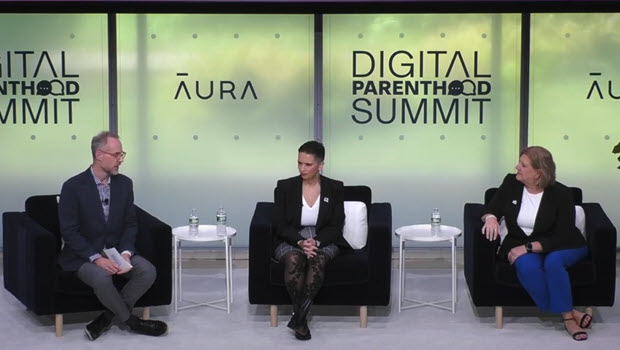Regulating cellphone use in schools is a hot topic, and at least 11 states have policies banning or restricting students’ cellphone use. Seventy-two percent of high school teachers say that cellphone distraction is a major problem in their classroom.
Earlier this summer CEA President Kate Dias took part in a conversation at Aura’s Digital Parenthood Summit titled Dialing Back Phones in Schools.
“We went through the pandemic and technology took over education,” said Dias. “Now we need to rebalance that and figure out what’s the right, developmentally-appropriate use of technology.”
She pointed out that, given students’ differing developmental needs, states and districts can’t have a one-size-fits-all policy for kindergarten through twelfth grade.
“What’s right in kindergarten is not what’s right in twelfth grade. When we talk about high school students we’re really trying to build towards autonomous, well-developed humans who we can send out into the world to live their big dreams, and we need to develop skill sets that allow for that to happen.”
Manchester, where Dias teaches, instituted Yondr pouches, small cases that lock and keep phones safe while leaving students distraction-free, at the middle school. Dias said the key to introducing a new policy like Manchester did is thoughtful discussions with students and families.
“School leaders didn’t come in on day one and go, ‘Okay, we’re going to do Yondr pouches in the middle school, and every kid is going to put their phone in this pouch and off we go.’ They took the time to work with families and with kids to explain what we were doing, why we were doing it, and what we hoped to accomplish—what the problem was that we were trying to solve. It was fascinating to talk to kids because they could articulate it. They could tell you, ‘We’re kind of having challenges, we’re kind of getting aggressive, and we’re not communicating well.'”
Dias added, “We need to think about this globally in terms of what our communities need, what our families need, what our children need, and what our our educators need.”
Watch the full discussion below.







